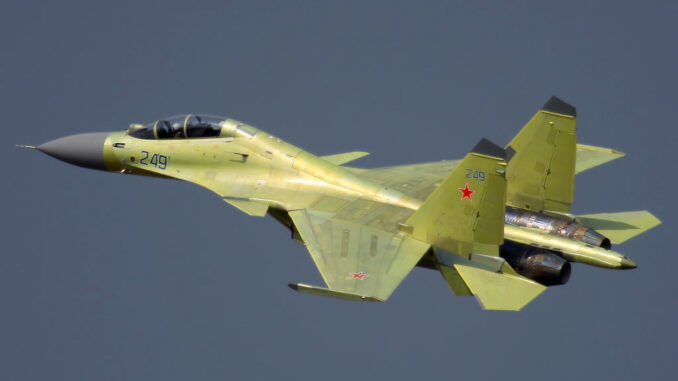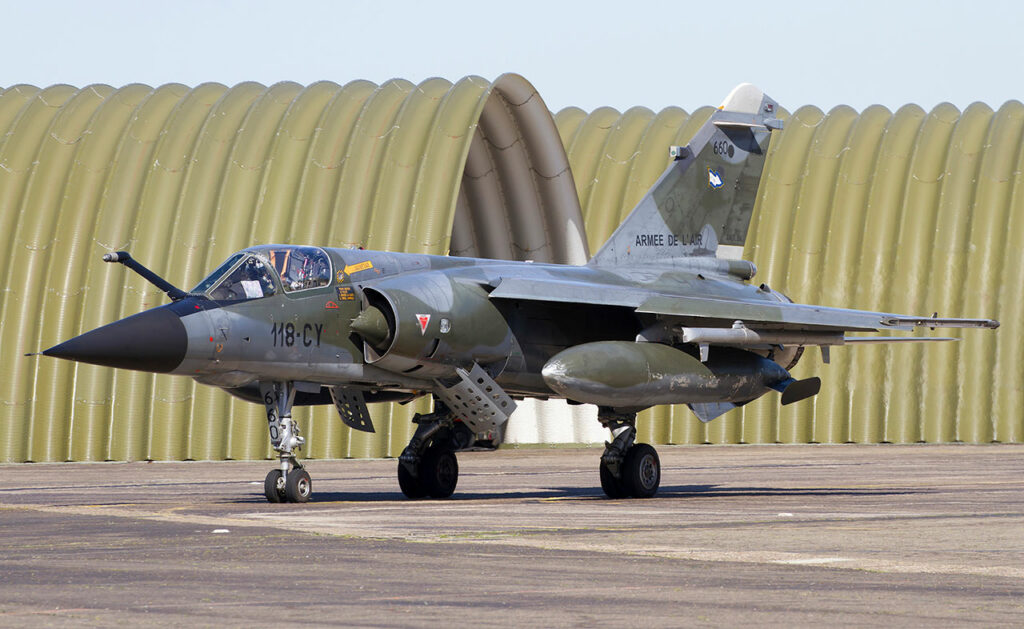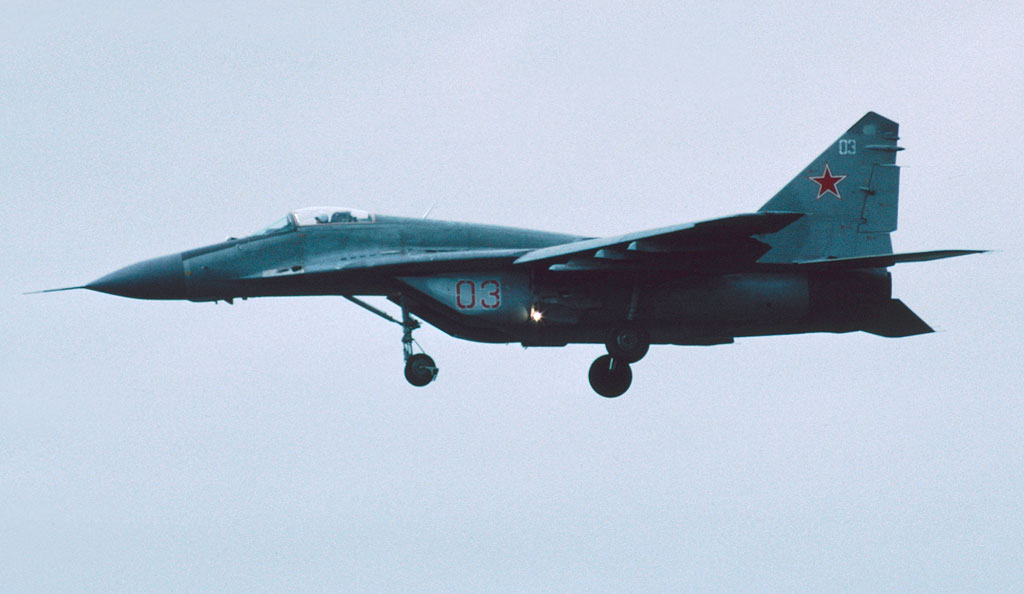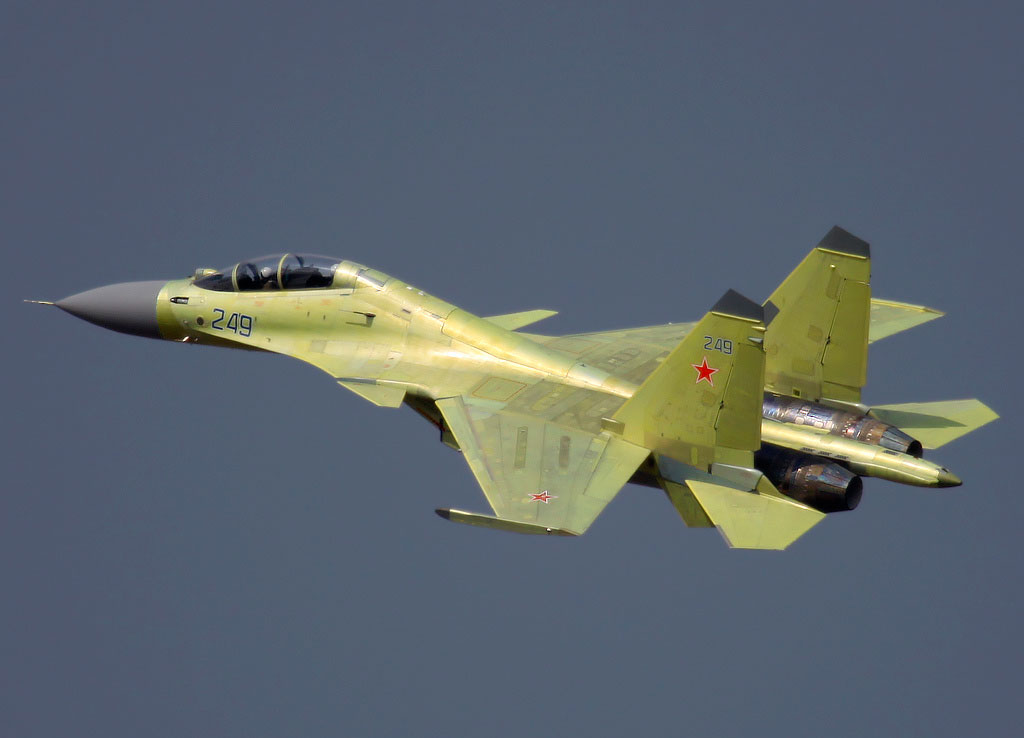
Discover Algeria’s fighter aircrafts, their technical specificity and an analysis of Algeria’s military capability in this field.
Algeria has a well-equipped air force, with a large number of modern fighter aircraft. Given its strategic geopolitical position, the country invests in advanced military technologies to ensure the protection of its territory. The Algerian fighter fleet is mainly made up of aircraft of Russian origin, with a few Chinese and European models.
The main aircraft used by the Algerian air force include high-performance models such as the Su-30MKA, MiG-29 and Su-24, capable of carrying out air defense, reconnaissance and ground attack missions. These aircraft are equipped with modern radar systems and can carry air-to-air and air-to-ground missiles, ensuring versatility in their missions.
With some 60 Su-30MKAs in service, Algeria has one of the largest fleets of this aircraft in the region. These aircraft, designed for air superiority, can reach speeds of Mach 2 and are equipped with electronically scanned radars. In parallel, the MiG-29 provides close air defense, while the Su-24 is mainly used for ground attack missions.

Overview of Algeria’s fighter fleet
Aircraft origin: mainly Russian, with some Chinese and European models
Most of Algeria’s fighter aircraft are of Russian origin. This choice is largely due to the historical relationship between Algeria and Russia in terms of military cooperation. Russia has supplied aircraft such as the Su-30MKA and MiG-29, which are high-performance models adapted to the country’s air defense needs.
The Su-30MKA is a variant of the Su-30 designed specifically for Algeria, with electronic equipment and mission systems adapted to the needs of the Algerian army. The MiG-29, meanwhile, is used for short-range interception missions and complements the Su-30’s territorial defense capabilities.
In addition to the Russian models, Algeria also has Chinese-made aircraft such as the Chengdu JF-17 Thunder, a light fighter that offers versatility in air-to-air and air-to-ground missions. Although limited in number, these aircraft represent an example of the diversification of the country’s military procurement.
The fleet also includes a number of European aircraft, mainly Mirage F1s of French origin, purchased in the 1980s and still used today for specific missions, although they are gradually being withdrawn from service.
Number of aircraft in service
The Algerian Air Force currently has around 60 Su-30MKA and 30 MiG-29 aircraft in service, making it one of the largest fighter fleets in the region. The Su-30MKA is considered the backbone of Algerian air defense, thanks to its versatility and long-range operating capabilities. The MiG-29, although an older model, continues to play a key role in protecting Algerian airspace.
In parallel, Algeria has a fleet of 15 Su-24s, mainly used for tactical bombing and ground attack missions. The Mirage F1s, although reduced in number (around 10 aircraft still operational), continue to be used for secondary missions.
These figures show that Algeria has invested heavily in modernizing its air capabilities, in particular with Russian-made multirole fighters, while maintaining a certain diversity in its procurement.
Main fighter aircraft: characteristics and specific features
Su-30MKA: air superiority and versatility
The Su-30MKA is one of the most important aircraft in the Algerian fleet. It is an adapted version of the Su-30, designed in collaboration with Russia to meet Algeria’s specific needs. This fighter is renowned for its versatility and air superiority capabilities.
The Su-30MKA is capable of long-range missions, including interception of enemy aircraft, air defense and ground attack. Equipped with vectored thrust engines, it offers exceptional maneuverability, particularly useful in close air combat. It can reach speeds of 2,120 km/h (Mach 2) and has a range of 3,000 km, enabling Algeria to cover its airspace effectively.
In terms of armament, the Su-30MKA is capable of carrying short- and medium-range air-to-air missiles, guided bombs and air-to-ground missiles, making it suitable for a wide range of missions. This model is the backbone of air superiority operations in Algeria.
MiG-29: close air defense
The MiG-29 is another essential fighter for Algeria, mainly used for close air defense missions. Originally designed by the Soviet Union, this aircraft is lighter and faster than the Su-30. It can reach speeds of up to 2,400 km/h, and is particularly effective for short-range interception missions.
The MiG-29 is equipped with state-of-the-art radar capable of detecting targets up to 100 km away, and can engage enemy aircraft using high-precision air-to-air missiles. Its maneuverability and agility make it a formidable aircraft for short-range aerial combat.
Algeria has around 30 MiG-29s, which are often used in conjunction with the Su-30 to provide effective air defense, particularly for close-protection missions.
Su-24: bomber and ground attack
The Su-24 is a tactical bomber used by Algeria for ground attack missions. It is particularly appreciated for its ability to carry a wide variety of munitions, including laser-guided bombs, air-to-ground missiles and conventional bombs.
The Su-24 can reach speeds of up to 1,600 km/h and has a range of 1,560 km, making it ideal for deep penetration missions into enemy territory. Algeria uses this aircraft to carry out precision strikes against strategic targets, such as military infrastructures or enemy defense installations.
Other aircrafts: Chengdu JF-17, Mirage F1
In addition to Russian fighter jets, Algeria has also acquired Chengdu JF-17s from China. This light fighter is designed for air-to-air and air-to-ground missions. Less expensive than the Su-30 or MiG-29, the JF-17 represents an economical solution for missions requiring less firepower.
Algeria also owns Mirage F1s, purchased from France in the 1980s. Although these aircraft are gradually being withdrawn from service, they still play a limited role in reconnaissance missions and pilot training.

On-board technologies and weapons
Radars, weapons systems and mission versatility (air-to-air, air-to-ground)
Algeria’s fighter jets are equipped with modern technologies to maximize their mission effectiveness. On-board radars play an essential role in target detection and tracking. For example, the Su-30MKA uses a N011M Bars electronically scanned radar, capable of tracking up to 15 targets simultaneously and locking onto 4 of them at the same time. This ability to manage multiple targets ensures air superiority in complex combat situations.
Weapon systems on board Algerian aircraft vary according to mission. For air-to-air missions, aircraft are equipped with radar-guided missiles such as the R-77 and R-27, which offer medium- and long-range firing capabilities. These missiles are designed to engage air targets before they can retaliate.
For air-to-ground missions, aircraft such as the Su-30MKA and Su-24 are equipped with laser-guided missiles and bombs, such as the Kh-29L and KAB-500L bombs. These weapons enable ground targets to be hit with great precision, thus reducing collateral damage. This versatility enables Algeria to use its aircraft for both air defense and ground attack operations.
Surveillance and reconnaissance capabilities
In addition to combat missions, Algerian aircraft are equipped with advanced sensors for surveillance and reconnaissance operations. Electronically scanned radars, coupled with infrared systems, enable pilots to detect targets on the ground and in the air in low-visibility conditions.
The Su-24, for example, can be used for long-range reconnaissance missions. With its specialized sensor equipment, this aircraft is capable of mapping entire areas and providing tactical intelligence in real time.
These surveillance capabilities enhance military operations by enabling targets to be located before an attack, and sensitive areas to be monitored. They play a key role in protecting Algerian territory, by detecting potential threats before they reach the country.
The integration of these on-board technologies, combined with the diversity of weapons available, gives the Algerian air force strategic versatility, whether for defensive or offensive missions, in complex air and ground environments.
Analysis of Algeria’s military capability
Regional comparison with other air forces
Algeria has one of the largest and best-equipped air forces in the Maghreb and North Africa. Compared with neighboring countries such as Morocco, Tunisia and Libya, Algeria stands out for the continuous modernization of its fighter aircraft fleet. The Su-30MKA, which forms the backbone of Algeria’s fighter aviation, is considered one of the most advanced aircraft in the region, offering air superiority and versatility that few countries can match.
Morocco, for example, mainly uses F-16s, which are efficient but less versatile than the Su-30. In terms of aircraft numbers, Algeria is also ahead, with an estimated fleet of around 60 Su-30MKAs, compared with around 23 F-16s for Morocco. These figures show that Algeria is better positioned to carry out large-scale operations and defend its territory against air and ground threats.
Faced with Libya, whose air force has been weakened by years of conflict, Algeria has an indisputable superiority in terms of combat aviation. Countries like Tunisia have a more modest air force, mainly equipped with F-5s and a few Mirage F1s, making any comparison less meaningful.

Geopolitical stakes and the role of fighter aircraft
Fighter aviation plays a crucial role in Algeria’s defense strategy, given its vast territorial expanse and sensitive borders. With more than 6,000 km of land borders, Algeria must ensure constant surveillance of its border zones, particularly with countries such as Libya and Mali, where regional instability represents a direct threat to security.
The acquisition of multi-purpose fighters like the Su-30MKA enables Algeria to provide air protection against incursions, while also being able to carry out reconnaissance missions and precision strikes against strategic targets in the event of conflict. In addition, Algeria has invested in anti-aircraft defense systems, reinforcing its ability to deter potential air attacks.
In terms of regional alliances, Algeria plays a pivotal role, developing partnerships with countries such as Russia for the maintenance and acquisition of new military equipment. This strategic partnership ensures that the Algerian air force continues to benefit from the latest technologies available on the international market, reinforcing its long-term operational capacity.
At regional level, Algeria is positioning itself as a major air power, capable of influencing geopolitical balances thanks to its military capabilities.
War Wings Daily is an independant magazine.